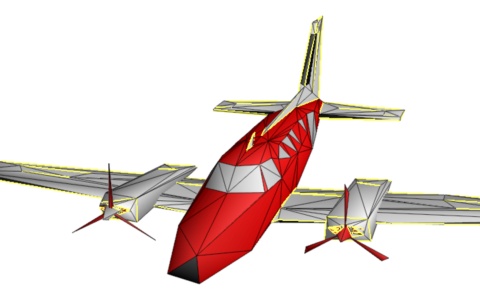Progressive meshes

ACM SIGGRAPH 1996 Proceedings, 99-108.
(Seminal Graphics Papers Vol 2.)
(Seminal Graphics Papers Vol 2.)
Efficient, lossless, continuous-resolution representation of surface triangulations.
Abstract:
Highly detailed geometric models are rapidly becoming commonplace in computer graphics. These models,
often represented as complex triangle meshes, challenge rendering performance, transmission bandwidth, and
storage capacities. This paper introduces the progressive mesh (PM) representation, a new scheme
for storing and transmitting arbitrary triangle meshes. This efficient, lossless, continuous-resolution
representation addresses several practical problems in graphics: smooth geomorphing of level-of-detail
approximations, progressive transmission, mesh compression, and selective refinement.
In addition, we present a new mesh simplification procedure for constructing a PM representation from an arbitrary mesh. The goal of this optimization procedure is to preserve not just the geometry of the original mesh, but more importantly its overall appearance as defined by its discrete and scalar appearance attributes such as material identifiers, color values, normals, and texture coordinates. We demonstrate construction of the PM representation and its applications using several practical models.
In addition, we present a new mesh simplification procedure for constructing a PM representation from an arbitrary mesh. The goal of this optimization procedure is to preserve not just the geometry of the original mesh, but more importantly its overall appearance as defined by its discrete and scalar appearance attributes such as material identifiers, color values, normals, and texture coordinates. We demonstrate construction of the PM representation and its applications using several practical models.
Hindsights:
More recent papers describe faster simplification criteria, such as the
quadric error metric scheme of Garland and
Heckbert,
the memoryless scheme of Lindstrom and Turk,
and my improved quadric error metric in
Visualization 1999.
But, the first 4 pages are still excellent. The paper should have made it more obvious that a geomorph can
directly transition between any two PM meshes by simultaneously moving many vertices.
See content copyrights.